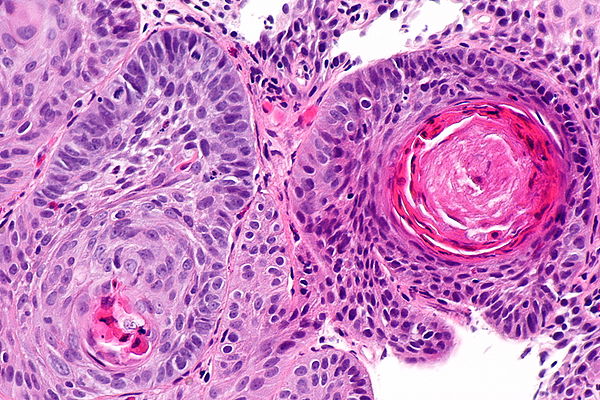Esophageal cancer, often abbreviated as EC, is a serious medical condition that affects the esophagus, the muscular tube responsible for transporting food from the throat to the stomach. This type of cancer has become increasingly prevalent worldwide, with varying incidence rates depending on geographic location, lifestyle factors, and genetic predisposition. Understanding the different types, causes, symptoms, diagnostic methods, and treatment options is crucial for early detection and effective management of this disease.

Types of Esophageal Cancer
There are two primary types of esophageal cancer, each originating in different types of cells within the esophagus:
Squamous Cell Carcinoma
Squamous cell carcinoma arises in the squamous cells, which are flat, thin cells lining the surface of the esophagus. This type of cancer is more commonly found in the upper and middle parts of the esophagus. It is particularly prevalent in regions such as Asia, Africa, and parts of Europe, where smoking and excessive alcohol consumption are significant risk factors.
Adenocarcinoma
Adenocarcinoma begins in the glandular cells, which are responsible for producing mucus and other fluids. This form of esophageal cancer typically occurs in the lower part of the esophagus, near the stomach. It is more common in Western countries and is strongly associated with a condition known as Barrett’s esophagus, which results from chronic acid reflux.
Causes and Risk Factors
The exact cause of esophageal cancer remains unknown, but several risk factors have been identified that significantly increase the likelihood of developing the disease:
Lifestyle Factors
- Tobacco Use: Smoking cigarettes, cigars, or pipes, as well as chewing tobacco, greatly increases the risk of esophageal cancer.
- Alcohol Consumption: Heavy drinking over an extended period is another major risk factor, especially when combined with tobacco use.
- Diet: A diet low in fruits and vegetables and high in processed meats and red meat can contribute to the development of esophageal cancer.
Medical Conditions
- Gastroesophageal Reflux Disease: Chronic acid reflux can damage the lining of the esophagus, leading to Barrett’s esophagus and increasing the risk of adenocarcinoma.
- Obesity: Excess body weight is linked to an increased risk of adenocarcinoma due to its association with gastroesophageal reflux disease.
- Achalasia: A rare disorder that makes it difficult for food to pass into the stomach can lead to long-term irritation of the esophagus.
Other Factors
- Age: The risk of esophageal cancer increases with age, with most cases occurring in individuals over 55 years old.
- Gender: Men are three to four times more likely to develop esophageal cancer than women.
- Family History: A family history of esophageal cancer or related conditions may elevate the risk.
Symptoms of Esophageal Cancer
In its early stages, esophageal cancer often does not produce noticeable symptoms. As the disease progresses, however, the following signs may appear:
- Dysphagia: Difficulty swallowing, which may start with solid foods and later include liquids.
- Weight Loss: Unintended and significant weight loss is a common symptom.
- Chest Pain: Persistent pain or discomfort in the chest, often mistaken for heartburn.
- Hoarseness: Changes in voice or persistent hoarseness without an apparent cause.
- Coughing: A chronic cough, sometimes accompanied by blood in the sputum.
- Vomiting: Regurgitation of food or blood, indicating advanced stages of the disease.
Diagnosis of Esophageal Cancer
Early diagnosis is critical for improving the prognosis of esophageal cancer. Several diagnostic methods are used to detect and evaluate the disease:
Endoscopy
An endoscopy involves inserting a flexible tube with a camera into the esophagus to examine its lining. During this procedure, a biopsy may be taken to analyze suspicious tissue under a microscope.
Barium Swallow Test
This imaging test requires the patient to swallow a liquid containing barium, which coats the esophagus and makes abnormalities visible on X-rays.
Imaging Tests
- Computed Tomography Scan: Provides detailed images of the esophagus and surrounding structures to assess the extent of cancer spread.
- Pet Scan: Helps identify areas of active cancer growth by detecting metabolic activity.
Additional Tests
- Endoscopic Ultrasound: Uses sound waves to create detailed images of the esophagus and nearby lymph nodes.
- Bronchoscopy: Examines the airways to determine if cancer has spread to the lungs or trachea.
Treatment Options for Esophageal Cancer
The treatment approach for esophageal cancer depends on the stage of the disease, the type of cancer, and the overall health of the patient. Common treatment modalities include:
Surgery
Surgical procedures aim to remove cancerous tissue and may involve:
- Esophagectomy: Removal of part or all of the esophagus, followed by reconstruction using a portion of the stomach or intestine.
- Lymph Node Dissection: Removal of nearby lymph nodes to check for cancer spread.
Radiation Therapy
Radiation therapy uses high-energy beams to target and destroy cancer cells. It may be administered before surgery to shrink tumors or after surgery to eliminate remaining cancer cells.
Chemotherapy
Chemotherapy involves the use of drugs to kill cancer cells or stop their growth. It is often combined with radiation therapy in a treatment plan known as chemoradiation.
Targeted Therapy
Targeted therapy focuses on specific molecules involved in cancer growth. For example, drugs like trastuzumab may be used to treat adenocarcinomas that overexpress the HER2 protein.
Immunotherapy
Immunotherapy harnesses the body’s immune system to fight cancer. Checkpoint inhibitors, such as pembrolizumab, are used in certain cases to enhance the immune response against cancer cells.
Palliative Care
For advanced-stage esophageal cancer, palliative care focuses on relieving symptoms and improving quality of life. Procedures such as stent placement or laser therapy may be used to alleviate swallowing difficulties.





